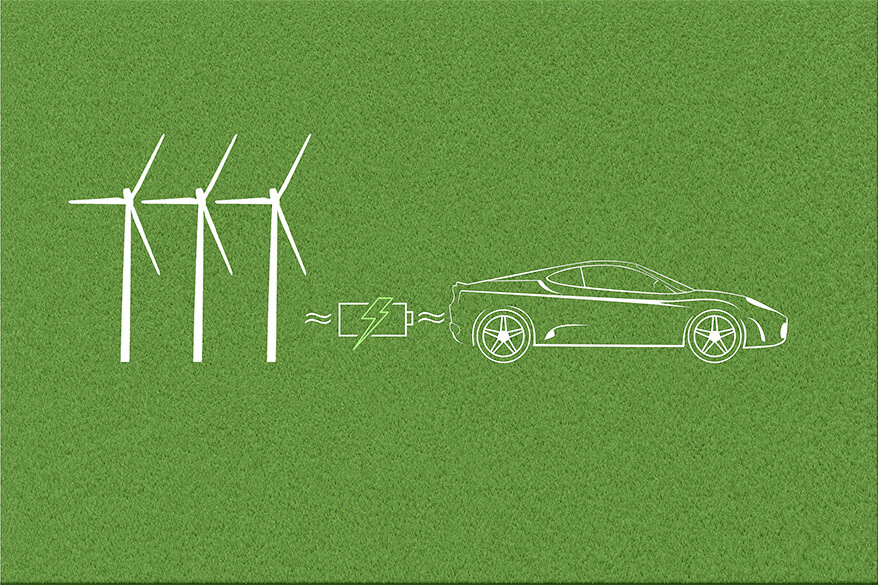Lithium Metal Batteries Are Measured By
Nov 08, 2019 Pageview:2056
The lithium-ion battery is the most widely used rechargeable battery. Lithium-ion batteries are widely used in portable electronic devices, including electric vehicles and several larger application and they are also becoming increasingly popular inspecial and military applications. The technology upon which the battery works was majorly developed by Akira Yoshino, John Goodenough, Rachid Yazami, and Stanley Whittingham, in the 70s and 80s and then it was made commercially available in 1991 by a team of Sony and Asahi Kasei under the direction of Yoshio Nishi.
In these batteries, the lithium ions migrate from the negative electrode via an electrolyte to the positive electrode. This is the movement during discharge, but the reverse is the case when the battery is charging. Lithium-ion batteries use intercalated lithium compounds as its material in the positive electrode and generally, graphite is used in the negative electrode.
How is the lithium metal battery measured?
"Battery capacity" is generally measured in amp-hr of the charge that’s stored in the battery. And this is determined by the mass of the active material in the battery. The capacity of the battery indicates the maximum amount of energy which can be obtained from the battery under certain conditions. However, the main storage capacity of the battery can vary greatly from the nominal capacity because its capacity depends largely on its age and the history of the battery. This includes the state of charge or discharge and the charging regimes of the battery.
Then in some cases, the energy stored in batteries, (which is known as battery capacity), is measured in watt-hours (Wh) or kilowatt-hours (kWh) or as we’ve said, in ampere-hours (Ahr).
The most commonly used measure of battery capacity is, however, the Ah. And this is defined as the number of hours that a battery can supply a current that is equal to the discharge rate at the nominal battery voltage rated for the battery.
The Ah unit is commonly used in battery systems because the battery voltage may vary throughout the charging or discharging cycle (through the entire life of the battery). The capacity of Wh may be approximated by the capacity of Ahr by multiplying the capacity of AH by the nominal voltage of the battery (or, if known, by the average time). A more precise approach takes the voltage variation into account by integrating the capacitance AH x V (t) during the period of the charge cycle.
For example, using a 12-volt battery that has a 500 Ah capacity will allow energy storage of about 100 Ah x 12 V = 1,200 Wh or 1.2 KWh.
However, because of the significant impact of the charging rates or the temperature, for accurate analysis, battery manufacturers also provide additional information on the variation of their battery capacity.
As we’ve already known that Lithium-ion cells or other cells are measured in ampere-hours (Ah). To put in perspective, what one ampere-hour means is that you can derive one ampere from the battery cell over one hour. Therefore, the ampere-hour is ultimately the product of hours’ multiplied by the ampere. Similarly, 1 Ah means that you can get 2A from the cell for half an hour, or you can get 0.25A over 4 hours.
The capacity (Ah) is a measure of the stored coulombs. When you look at the amp-hour units, an amp equals 1 coulomb for a second. If ampere is multiplied by the time, the result is coulombs. As we know that one hour equals 3600 seconds, 1 Ah is equivalent to 3600 amperes-seconds or (3600 coulombs/ second) × second, which corresponds to 3,600 coulombs of the charge stored in the cell. It is pertinent to note that for the smaller cells, the capacity can be measured in milliampere-hours (mAh), as you get in smartphones. For instance, the common 18650 lithium-ion battery stores about 3000 mAh or 3 Ah.
How much lithium is in a lithium metal battery?
This answer to this question is somewhat relative since different manufacturers make their battery to be of different capacities. Some for lesser devices, while others for heavy-duty purposes.
Tesla, for instance, makes use of Panasonic's "NCR18650B", and this comes with a capacity of 3250 mAh and the battery operates at about 4.2 V.
Generally, a 2Ah lithium-ion 18650 cell typically has a lithium content of about 0.6 grams. Therefore, the lithium content of Tesla’s 3250 mAh will be (0.6 / 2) x 3.250 = 0.975 g Li.
Therefore, at an operating voltage of 4.2 V, the lithium content would now be.
0.975 / (3,250 × 4.2) = 0.0714 g / Wh = 0.0714 kg / kWh.
This, of course, is for Tesla. For example, Chevy Volt uses pouch cells that can have a different lithium content from Tesla batteries. This may be the reason you see variations in lithium content in the batteries of different manufacturers. One of the deciding factors is the model of the product or device –be it a car or a piece of medical equipment, the manufacturer is also a factor and the geometry of the cell as well.
How to calculate the lithium content in a battery
If you wish to ship or travel with some of your lithium batteries, or any rechargeable battery containing lithium, you must know the lithium contents of what you’re traveling with. You may also need to know the lithium content of your battery for other reasons. There are lithium content calculators you can use online, you can find one when you search Google. But this guide can help you calculate manually, or if you don’t have access to the internet when the calculation is to be done.
This applies both to lithium metal batteries (which are disposable) and to lithium-ion batteries (which are rechargeable).
When considering the "lithium content" of a battery, it doesn’t necessarily mean you are to find out how much lithium metal there is in the battery. Technological advances have helped in the development of new alloys that replace lithium in batteries and make it an "equivalent" of lithium in the battery. They are therefore subject to the same rules and guidelines as lithium.
The lithium (or lithium equivalent) content of a rechargeable battery or battery pack can be calculated by the multiplication of 0.3 x amperes. Therefore A 2Ah battery contains 0.6 gram of lithium (2 x 0.3) and a typical 2 Ah 8-cell laptop battery contains 4.8 grams, that is (8 units x (0.3 x 2 Ah )).
- Prev Article: How much lithium is in a lithium ion battery?
- Next Article: Making Li-ion Battery Pack
Leave Message
Hottest Categories
-
Hottest Industry News
-
Latest Industry News













